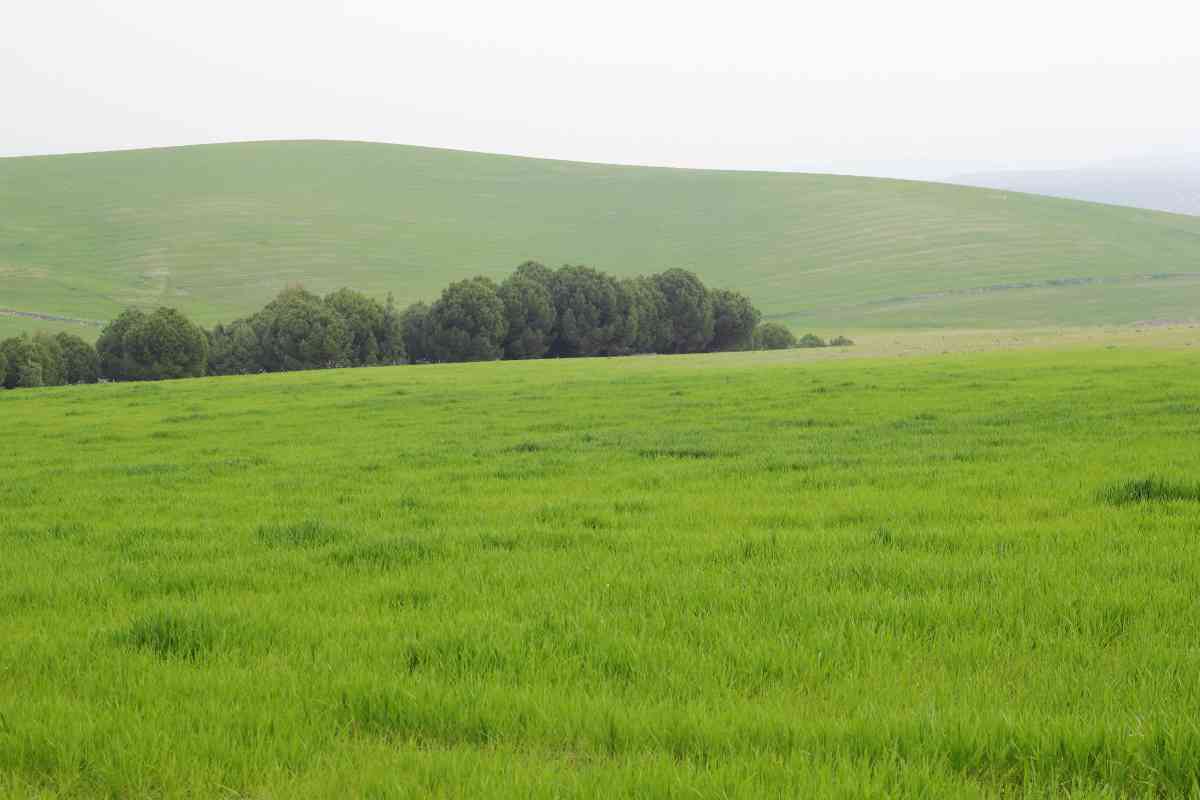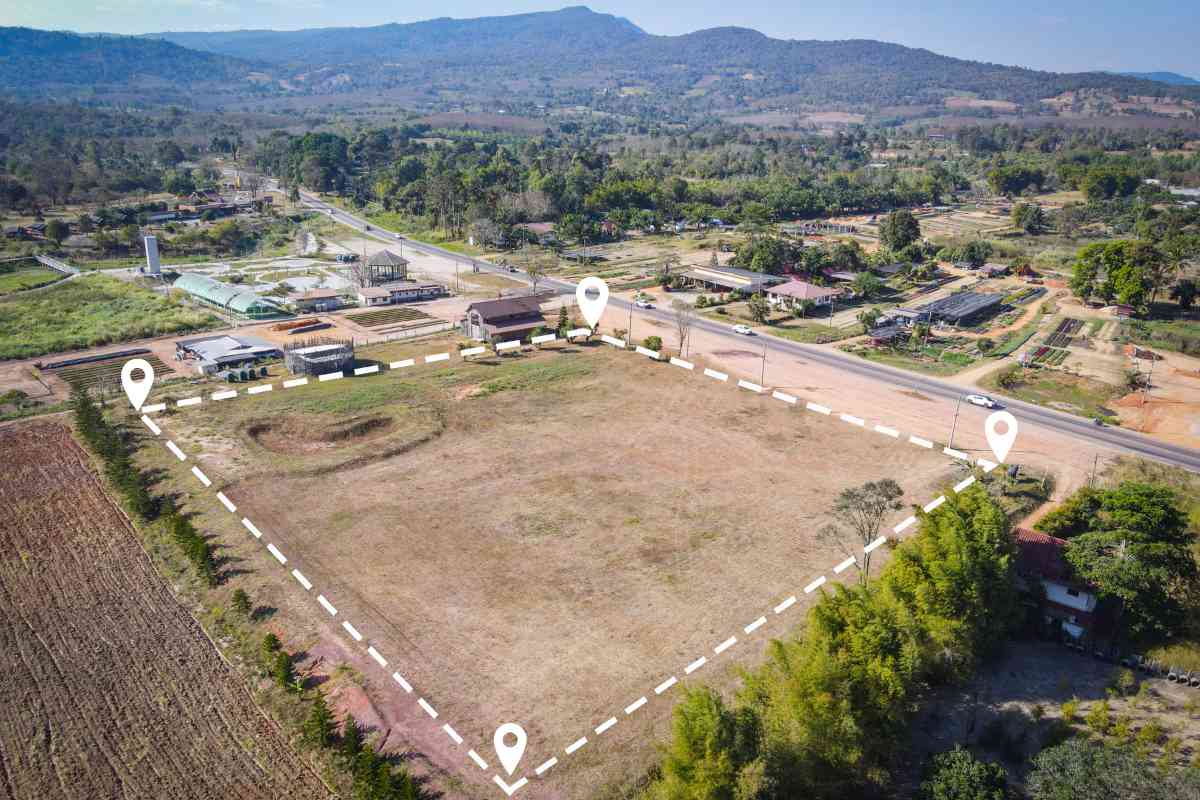How to Make Land Pay for Itself: 5 Smart Strategies
Owning land transcends mere possession; it opens up avenues for passive income through strategic management and utilization. By tapping into the full potential of your land, you unlock the opportunity not just to offset its costs but to cultivate a significant source of revenue. From traditional farming ventures to inventive approaches that align with current market trends, numerous strategies can transform your property into a lucrative asset.

Related Post! Can You Make A Living Farming 5 Acres?
How Do You Make Land Pay For Itself?
To make your land pay for itself, diversify revenue streams by leasing it for farming, hosting renewable energy projects, offering storage or parking solutions, and developing it for residential or commercial use. Utilize tax incentives, secure loans wisely, and adopt sustainable practices to enhance profitability while protecting the environment.
The journey to monetizing your land begins with an insightful assessment of its potential, exploring avenues like leasing for agricultural or recreational purposes, developing campgrounds or solar farms, or renting out space for storage. While some options may demand a hands-on approach, others offer the allure of passive income, enabling you to reap the benefits of your land without immersing yourself fully in its management.
Key Takeaways
- Leveraging your land’s utility can not only cover its expenses but also generate substantial income.
- Identifying the best use of your land involves a thorough evaluation of its potential.
- Select income-generation strategies based on your preferred level of engagement, from hands-on to passive.
Understanding Your Land’s Potential
Maximizing your land’s revenue capabilities necessitates a detailed analysis of its characteristics and any legal restrictions.
Evaluating Your Land’s Capabilities
To kickstart your land’s financial contributions, scrutinize its physical and legal attributes. Agricultural land may be versatile in its support for different farming activities, while vacant plots could serve as prime locations for solar farms or other renewable energy projects. Key considerations include:
- Soil quality and landscape shape the suitability for certain crops or livestock.
- Access to resources like water and sunlight determines viability for agricultural pursuits or renewable energy initiatives.
For undeveloped plots, assess:
- Proximity to necessary infrastructure
- Ease of access for vehicles and equipment
- Potential for leisure activities or as lucrative storage spaces
Rural land may excel in bolstering the local economy through environmental conservation efforts or offering unique outdoor experiences.
Related Post! Creative Ways To Make Money On 100 Acres Of Land
Zoning and Legal Considerations
Before generating income, familiarize yourself with the zoning regulations affecting your land’s usage. Ensuring compliance with these laws safeguards the sustainability of your venture. For effective planning:
- Identify the zoning classification (residential, commercial, agricultural, or mixed-use).
- Consider any financial implications, such as taxes or fees, linked to altering the land’s purpose.
- Adhere to local ordinances to prevent penalties and validate your operations as beneficial to the community’s economy.
Revenue Generation Strategies
Leveraging the potential of your land can unlock a significant stream of passive income, offering diverse ways to utilize your property effectively and profitably. Here are some strategic approaches to consider for generating a steady revenue flow from your land.
Leasing for Farming and Grazing
Renting out your fertile land for farming or grazing purposes can be a win-win situation. It provides local farmers or ranchers with essential space for their operations while ensuring you receive a consistent income. This option is versatile, fitting various land sizes and offering a reliable revenue stream.
Hosting Renewable Energy Sources
Embrace the renewable energy trend by converting your land into a site for solar panels or wind turbines. This initiative not only generates a sustainable income but also positions your property as a contributor to eco-friendly power solutions. It’s a forward-thinking approach that taps into the growing demand for renewable energy sources.

Offering Storage and Parking Solutions
Maximize the use of your vacant land by providing sought-after storage solutions. Cater to the needs for RV, boat, or vehicle storage, turning unused space into a profitable venture. Additionally, offering parking solutions, especially in strategic locations during events, can bolster your income with minimal investment.
Opening Land to Recreation and Events
Transform your property into a destination for recreation and events. By hosting gatherings, creating a campground, or leasing out hunting rights, you can draw regular visitors. Outdoor activities, especially in picturesque settings, are in high demand, with opportunities like deer hunting leases proving to be lucrative.
Related Post! How Many Acres Should I Buy For Hunting?
Timber and Natural Resource Sales
Assess your land for valuable natural resources such as timber. Sustainable harvesting practices can yield immediate financial returns and encourage new growth, ensuring the longevity and health of your land. Selling natural resources like minerals or timber responsibly can significantly contribute to your income while maintaining ecological balance.
Capitalizing on Real Estate Opportunities
Owning land unlocks a plethora of avenues for generating income, stretching from the direct sale of parcels to more nuanced strategies like conservation easements and innovative land uses. Here’s a roadmap to navigating these opportunities and transforming your property into a profitable and sustainable asset.
Selling Land Parcels
Subdividing and selling your vacant land in smaller parcels can significantly boost its overall market value. This approach caters to a broader spectrum of buyers and can yield a higher profit compared to selling the land as a single lot. Key considerations include:
- Surveying Costs: Depend on land size and complexity.
- Marketing Expenses: Vary with the chosen advertising strategies.
- Potential Profit: Generally enhanced by marketing the land in smaller, desirable plots.
Developing Land for Sale or Rent
Developing your land—whether for residential, commercial, or agricultural use—can substantially increase its value. You have the choice to sell the developed properties or rent them out, establishing a steady source of income.
Steps for Developing Land:
- Determine the land’s intended use and obtain the necessary permits.
- Undertake construction to enhance the property.
- Decide between selling or renting out the developed land for continuous income.
Exploring Conservation Easements
Conservation easements offer a unique way to generate income while preserving the land’s natural state. This approach provides tax benefits and sometimes direct payments, in exchange for limiting the types of activities that can occur on the property.
Considerations for Conservation Easements:
- Tax Deductions: Assess the financial impact.
- Long-term Commitments: Be aware of the enduring restrictions on your land.

Alternative Land Uses and Innovations
Related Posts!
- Creative Ways To Make Money On 2 Acres Of Land
- Creative Ways To Make Money On 5 Acres Of Land
- Creative Ways To Make Money On 10 Acres Of Land
Beyond traditional methods, exploring innovative uses for your land can lead to additional revenue streams while contributing positively to the community and environment.
Commercial Ventures and Advertisements
- Utilize parts of your land for commercial events or retail spaces.
- Leverage high-visibility areas for advertising, such as billboards, offering prime space to companies.
Community and Urban Farming Initiatives
- Create community gardens or urban farming plots for local residents, promoting local food production and community engagement.
- These initiatives can serve as educational hubs for sustainable agriculture, driving interest and rental income.
Supporting Local Wildlife and Eco-Tourism
- Dedicate areas for wildlife conservation to support local fauna and attract eco-tourism.
- Offer hunting rights or establish areas for nature enthusiasts, generating income while contributing to environmental conservation.
Financial Management
Turning your land into a consistent source of income requires strategic financial management, leveraging tax benefits, smart use of loans, comprehensive insurance coverage, and a commitment to long-term sustainability. Here’s how you can navigate these aspects to enhance your land’s profitability and contribute positively to the environment.
Tax Incentives and Deductions
Maximize your financial benefits through tax incentives and deductions available for land used in agriculture, conservation, or certain business ventures. Consult with a tax professional to:
- Identify eligible tax reductions or deductions.
- Implement strategies to optimize your land’s tax advantages, increasing its profitability.
Securing Loans with Land
Utilize your land as collateral for loans to finance developments that generate income, such as enhancing agricultural operations or constructing rental properties. When considering loans:
- Explore lending options aligned with your investment goals.
- Carefully evaluate loan terms, interest rates, and repayment plans to ensure they bolster your revenue without risking your property.

Insurance and Risk Management
Safeguarding your income streams through appropriate insurance coverage is crucial. Protect against potential losses from natural disasters, liability claims, and other unforeseen events by:
- Insuring land and business operations adequately.
- Regularly reviewing and updating insurance policies to match the evolving value and use of your land.
Long-Term Planning and Sustainable Practices
Commit to sustainability and long-term planning to ensure your land remains a valuable, income-generating asset.
Related Post! How Much Money Can You Make Farming 1,000 Acres?
Transitioning to Organic and Sustainable Farming
Adopt organic farming methods to enhance soil health, biodiversity, and potentially increase profitability by:
- Conducting soil tests for organic certification.
- Implementing crop rotations and natural pest management.
- Considering beekeeping to boost pollination and produce honey.

Creating Permanent Structures for Increased Value
Elevate your land’s value and expand income opportunities by investing in permanent structures like greenhouses or livestock shelters, enabling:
- Year-round crop cultivation.
- Improved animal welfare and potential leasing opportunities.
Partnerships with Environmental Organizations
Collaborate with environmental groups to gain access to conservation easements, renewable energy projects, and educational programs, which can:
- Provide tax benefits and protect the land.
- Generate steady income through sustainable energy ventures.
- Promote environmental stewardship and education.
By embracing these strategies, you position your land not only as a source of passive income but also as a testament to responsible and sustainable management. This holistic approach not only secures your financial future but also ensures the land contributes positively to the environment and community for generations to come.






